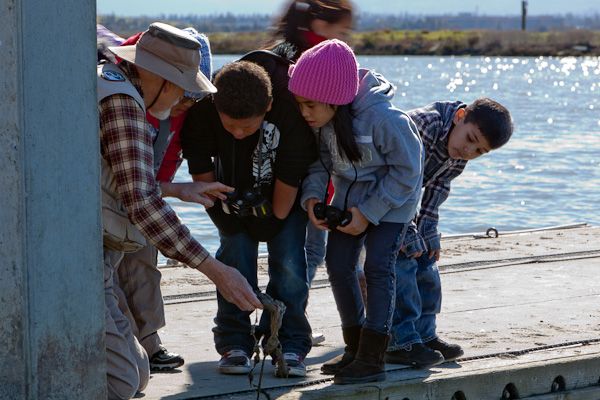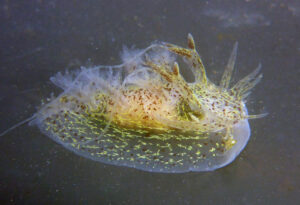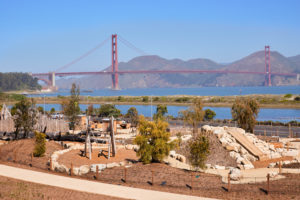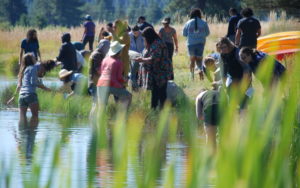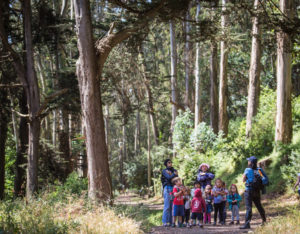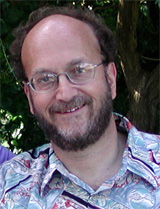
For Palo Alto-based Environmental Volunteers, personal exploration of nature is what it’s all about. By providing school kids with hands-on experiences of nature, Environmental Volunteers works to instill a love of the natural world and an interest in protecting it from an early age. The organization’s executive director Allen Berkowitz spoke with me last week about his life, what motivates him in this work, and about the organization itself.
Bay Nature: What is your connection to the Bay Area?
Berkowitz: I’m not a native. I grew up in Los Angeles, and then left for school. I did my undergraduate work at the Hebrew University in Jerusalem; and then I got an MA in education in 1985 from Columbia University Teachers College. When it was time to be in the real world, my wife and I were looking for a place to live. I applied to a job in New York, but spending too much time there made my skin crawl. There is no greenery, no open space. I have some family in Northern California, so I thought Northern California might be the place to be. My wife got a job here, too, as Executive Director of the Jewish Family Service of Silicon Valley.
BN: How did you go from studies in Israel and a degree in education to being Executive Director of an environmental organization?
Berkowitz: I’ve had two professional tracks. I’ve been director of Environmental Volunteers for thirteen years, but I’m also a rabbi. I studied at the Jewish Theological Seminary in New York concurrently with earning my MA. Initially we moved to San Jose for twelve years, where I was a pulpit rabbi. And then I decided to pursue the education side of my career. So when this job appeared on the radar screen, it really appealed to my passions and interests. And here I am.
As for the nature side, I’ve had a deep connection to the natural world since I was a kid. I had some experience in the Boy Scouts, and I also visited the Sierra and the Catalina Islands. In junior high, I formed the Ecology Club. So eventually, my deep interest in the natural world and my professional training merged. The two integrated in a powerful way.
There is a common thread between my two professional tracks. Both rely on community building and working to inspire people to do their part to make the connection that we’re all part of making the world a better place. For me it’s a seamless connection.
BN: How do you do what you do?
Berkowitz: I strive to promote understanding of responsibility for the environment through hands-on science. Our main program is a school based environmental science curriculum, using four-person teams of trained volunteers. We teach nine subjects, such as Baylands ecology, earthquake geology, and water science and conservation. And with each one we use small-group, hands-on, learning stations. All of our materials come with the message, “PLEASE TOUCH!”
So, for example, to learn about adaptation, kids look at a hawk, or a woodpecker, and see how different beaks allow different birds to eat in certain ways. When we go on field trips where they see these birds, it makes a strong and reinforced connection. We do over 500 school based programs each year, 400 class sessions and 120 field trips.
BN: What about your new headquarters?
Berkowitz: One year ago, after a seven- year restoration program, we opened an ecology center in the Palo Alto Baylands Preserve. It’s a boat-shaped building that used to be the headquarters for the Sea Scouts. In 1985 Palo Alto closed the harbor and allowed the marsh to return to its original condition. Subsequently, the building sank three feet, and so there was flooding as well as vandalism. But we negotiated a deal with the city of Palo Alto: If we restored the building, we could rent it for the next 40 years at $1 per year. So after a $3.8 million capital campaign and subsequent reconstruction, we have a new headquarters and nature center. Now we have monthly public education programs and an afterschool junior naturalist program. Eventually we should have 275,000 visitors a year.
BN: What challenges do you face?
Berkowitz: The whole field of environmental education is challenging for many reasons: It’s not always adequately funded; classroom teachers are busy, and they perceive it as yet another demand on their time; on the other hand, there is more demand for our services than we can provide, because of a lack of trained science teachers.
BN: What is your favorite outdoor destination in the Bay Area?
Berkowitz: The coastline between Davenport and Pescadero along Highway One. It’s reasonably undeveloped and it’s an iconic example of the California coastline. With the ocean on one side and dramatic mountains on the other, on a sunny day it’s very special.

